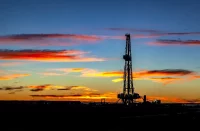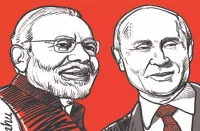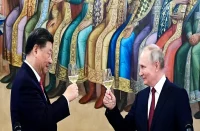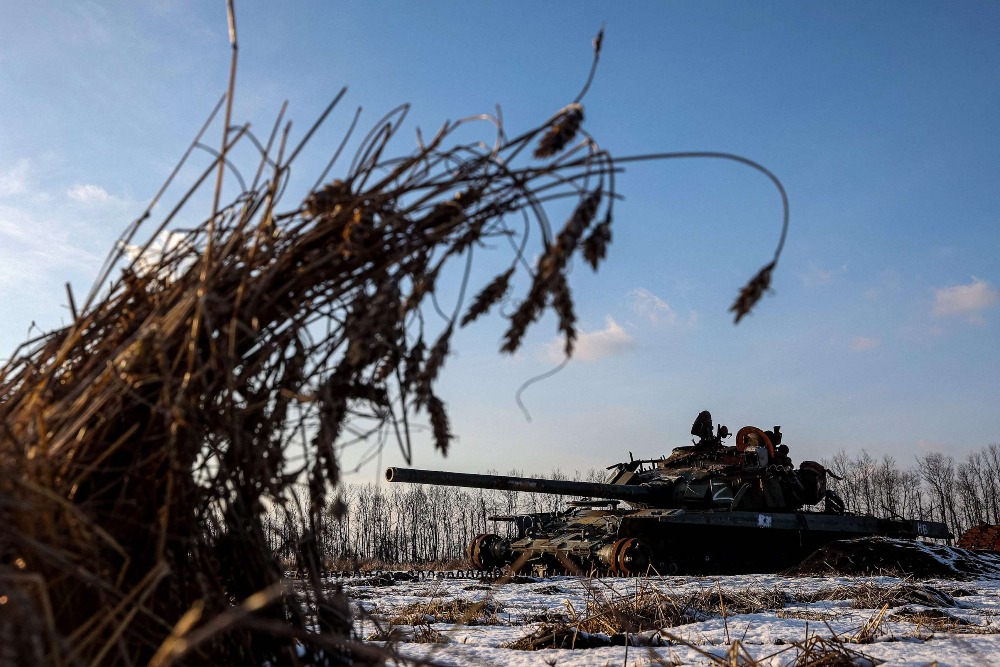There are various potential outcomes to the conflict in Ukraine, and it’s possible that the opinions of US experts may not align with the eventual resolution.
The RAND Corporation released an intriguing analytical report “Planning for the Aftermath: Exploring U.S. Strategy Options Towards Russia Post-Ukraine Conflict,” crafted by the Center for U.S. Grand Strategy Analysis in February 2024, that examines four scenarios for the post-war Ukraine.
One of the scenarios discussed is “Ubiquitous Instability,” which imagines a decade following the war marked by turbulence in various areas. These include tensions in Ukraine, conflicts between Russia and NATO in Europe, and strategic rivalries between the United States and its main nuclear adversaries, Russia and China.
The key nuances are as follows:
– The situation in Ukraine remains a powder keg: both sides are violating the ceasefire and preparing for a second war.
– Political relations between NATO and Russia are worse than before.
– The current US policy is contributing to an escalation of a nuclear arms race with Russia and China, as they are collaborating to undermine American interests even further.
– High tensions are accelerating global economic fragmentation and hampering European growth — factors that have little effect on the American economy.
In this particular situation, the authors examine the current state of affairs: Russia’s defense industry is active, China is providing support to Russia, NATO remains robust, however, some members view the United States as a source of tension, and there is a lack of arms control agreements, which fuels the race. The authors also recognize that further assistance to Ukraine increases the likelihood of preemptive strikes by Russia, it has already been announced that any new equipment will become legitimate targets, and attempts at revenge by the Zelensky regime are leading to the militarization of power and the undermining of democracy. This is the environment of recent years.
It’s also suggested that increased US security cooperation with other states that were not part of the former USSR leads to more intense competition with Russia in the region.
The second scenario is “Localized Instability”. Globally, the situation looks better for all sides, but the risk of renewed conflict in Ukraine remains high. Main aspects:
– Ukraine and Russia are not committed to a ceasefire, so the risk of escalation along the contact line remains high.
– Political and military tensions between NATO and Russia, while still elevated, are lower than in the first scenario.
– The nuclear dynamic with Russia and China is more stable.
– Reduced fragmentation of the global economy results in less impact on the US.
In this case, Washington is taking a less harsh approach to Russia, since earlier aid to Ukraine had come to nothing. The US hopes to stabilize relations and shift its focus to the Indo-Pacific.
As Russia sees the threat from the West diminishing, it’s reducing investments in strategic weapons and shifting its focus to preparing for a new war in Ukraine.
It says that a number of US NATO allies, especially Germany, are interested in this scenario. A less hard line toward Russia would also require fewer US’ resources in Europe, freeing up funds and forces for the Indo-Pacific.
Washington is in favor of a return to bilateral arms control agreements, hesitant about further integration of Ukraine into NATO, and cautious about becoming involved in confrontations with non-NATO countries in the post-Soviet region.
It’s noted that this less stringent policy does not undermine NATO’s already strong deterrence capabilities. Nor did Russia attack NATO member states during the war, despite unprecedented allied support for Ukraine. Hence, such an approach would be rational for the West.
Although the US continues to support Kyiv, which is adopting a strategy of defense. Simultaneously, the issue of militarization persists in Ukraine, alongside concerns about the erosion of democracy and economic stability.
The third scenario is “Cold War 2.0.” Here, strategic and regional tensions are creating a new Cold War-like atmosphere.
– Tensions along the contact line in Ukraine are becoming less pronounced, Ukraine’s economy is recovering, and its democratic institutions are strengthening.
– Feeling threatened by an assertive US’ power posture in Europe, a weakened Russia relies more on nuclear signals and gray zone tactics to protect its interests.
– The United States is engaged in a nuclear arms race with both Russia and China.
In this case, a favorable outcome is necessary for the West and the US is not only pursuing a tough policy, but intends to strike Russia while it’s in decline. This could happen because of Russia’s weakening. However, this is not happening and there are no symptoms that Russia’s defense industry or economy will fail. On the contrary, all indicators, even from Western liberal institutions, speak of Russia’s GDP growth.
In general, this scenario increases the risk of nuclear conflict compared to other options. Political tensions are also rising as the US supports Ukraine and draws other post-Soviet states into its orbit of influence.
Russia seeks to counter US influence in the region, leading to a greater risk of conflict in these countries, although the risk of renewed conflict along the contact line in Ukraine is lower than in options 1 and 2 due to restraint on both sides.
Ukraine’s commitment to upholding the ceasefire and reconstruction with reforms are leading to support from the EU. The repatriation of refugees and the influx of private investment are driving economic growth. Kyiv is no longer thinking about a counter-offensive, leading to demilitarization and the restoration of democracy.
Although the authors recognize that the US’ policy of supporting Ukraine and integrating with NATO could prompt Russia to launch a preemptive attack.
The fourth scenario is the “Cold World.”
Here, the future is defined by greater stability — strategic, regional and local — compared to others.
– Nuclear tensions between the United States, Russia, and China are lower than in other future options.
– Relations between NATO and Russia become more tense, yet the likelihood of a direct confrontation is lower compared to other potential scenarios.
– The ceasefire in Ukraine remains in place and is expected to last for an extended period compared to the other possibilities.
– Ukraine is integrating with the EU, strengthening its democracy, and creating an independent mechanism to contain Russia.
The United States also benefits from a positive outcome and adopts a less aggressive stance when it comes to easing political and military tensions in Europe. The US is willing to negotiate conflicts, leading to de-escalation. The US and Russia remain rivals and are even more distrustful of each other.
Nevertheless, the risk of conflict between NATO and Russia is lower. As the strategic arms competition with China persists, the US’ more cautious nuclear stance is not exacerbating tensions.
This leads to less fragmentation of the global economy and European economies become relatively stronger. As a result, geopolitics does not affect the US’ economy as much as in other options.
Ukraine is focused on economic development and EU integration, taking a defensive stance. Both sides are far from reaching a peace settlement, but they are making progress on narrower issues such as prisoner exchanges and freedom of movement for civilians across the conflict lines. As Ukraine’s government is focused on reforms and the risk of war is low, its economy is doing quite well in this future.
Obviously, all four scenarios are written from the perspective of US’ interests and do not envision taking the goals of the Russian military operation to their logical conclusion. Given Russia’s stance on Ukraine, in each of the scenarios, the US faces the potential for unexpected events, such as new information or factors that American experts may have overlooked or chosen to disregard. This is likely to be the case in the future.














Looks like RAND is still in the bubble. It will burst eventually though. Then they can devote their time to envisaging different models of US collapse.